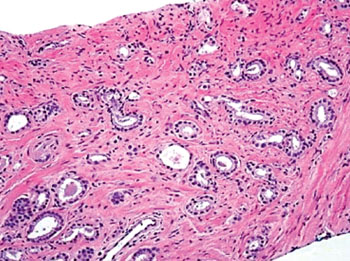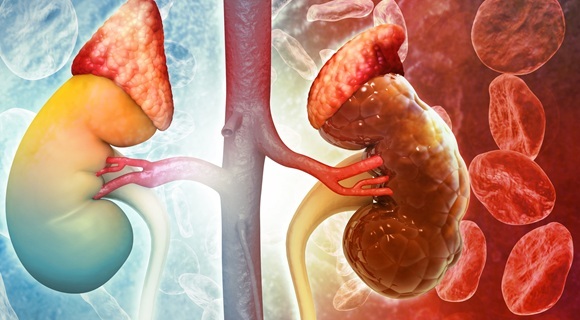Identification of Gene Defects Helps Prostate Cancer Treatment
By LabMedica International staff writers
Posted on 16 Nov 2016
The current method of treating prostate cancer involves identifying gene defects, which could help with the diagnosis of cancer and the development of individualized cancer treatments for patients.Posted on 16 Nov 2016
The molecular biology of prostate cancer is now under scrutiny as the goal is to obtain a holistic picture of the disease’s mechanisms and use those mechanisms as a basis for developing new treatments.

Image: A histopathology of prostate cancer showing multiple poorly formed glands with ill-defined lumina and/or incomplete nuclear complement (Photo courtesy of European Urology).
Scientists at the University of Tampere (Finland) have been studying the molecular mechanisms in prostate cancer, which is the most common cancer among Finnish men and the second most common cancerous cause of death in males. The disease's underlying mechanisms vary significantly from one individual to the next and therefore, prostate cancer treatments should be designed individually for each patient according to their personal clinical picture.
Several new treatments have been developed for prostate cancer in the past ten years. The same problem remains: the inability to predict which treatment will be most effective for each patient. It has been known for some time that prostate cancer growth is stimulated by male hormones called androgens. Hormonal therapy, which prevents the production or effects of androgens, has been the so-called gold standard in treating the advanced form of the disease.
However, prostate cancer can reactivate the androgen receptor-signaling pathway during treatment. Some types of prostate cancer eventually become independent of androgens. The scientists have found a new mechanism related to the activation of the transcription cofactor Hairy and Enhancer of Split 6 (HES6) as the result of gene fusion, which leads to this type of cancer cell development. These types of prostate cancer need non-hormonal therapy.
Tapio Visakorpi, MD, PhD, a professor and lead investigator of the study, said, “Recent genome studies have shown that even though prostate cancer initiates in a single cell of origin, several cancer cell subpopulations with different genome types emerge as the disease progresses. This is not a single disease; several mechanisms lead to the emergence of the disease. Therefore, it's important to identify those genome defects in each patient that occur in all cancer cells, that is, the so-called truncal mutations, and target the treatment to them. This requires taking multiple samples from the patient. The processing of samples also needs to be improved to make them more suitable for molecular analysis than the current methods. We've developed a new processing method for cancerous tissue.”
Related Links:
University of Tampere














